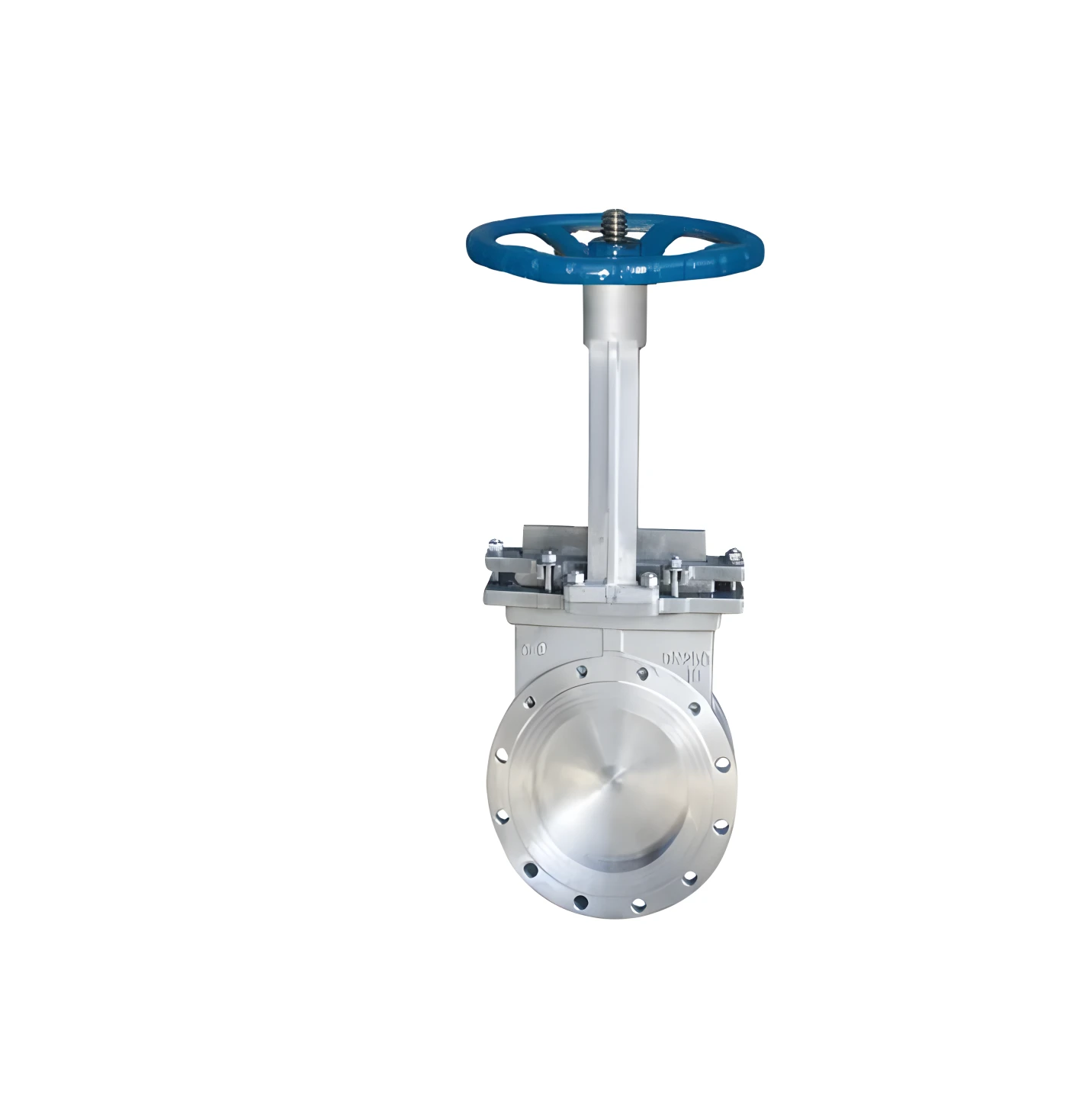| Application | General | Place of Origin | Shenzhen, China |
|---|---|---|---|
| Power | Manual, Gear Operated, Electrical Actuated, Pneumatic Actuate etc. | Customized support | OEM |
| Model Number | Knife Gate Valve | Temperature of Media | High Temperature, Low Temperature, Medium Temperature, Normal Temperature |
| Brand Name | GZP | Media | Water/ Oil/ Gas |
| Color | Customer's Request | Valve type | Knife Gate Valve |
| Certificate | ISO9001:2008, CE, TS,IECEE,GS | Connection | RF RJ RTJ Flanged |
| Medium | Water, Oil, Gas, Fuel, Acid | Body material | Stainless Steel, Carbon Steel, Gray Cast Iron |
| Standard | API ANSI JIS DIN | Keywords | Stainless Steel, Carbon Steel, Gray Cast Iron Manual Knife Gate Valve |
1. Introduction
Knife Gate Valves are designed for reliable and efficient flow control in various industrial applications. These valves feature a knife gate design that can cut through thick and abrasive media, ensuring smooth operation. The valves are available in different materials, including Stainless Steel, Carbon Steel, and Gray Cast Iron, to suit various application requirements.
2. Features
- Material Options: Stainless Steel (SS304/SS316), Carbon Steel, Gray Cast Iron.
- Design: Knife gate design to handle slurry, viscous, and abrasive fluids.
- Seal: Resilient or metal-to-metal seal options for tight closure.
- Actuation: Manual operation with a handwheel or lever, pneumatic, or electric actuators.
- Connection: Flanged, wafer, or lugged ends for versatile installation.
- Pressure Rating: Suitable for medium to high-pressure applications.
- Standards: Manufactured according to industry standards (e.g., ISO, API).
3. Applications
- Mining industry.
- Wastewater treatment plants.
- Pulp and paper industry.
- Chemical processing.
- Power generation.
4. Technical Specifications
| Parameter | Specification |
|---|---|
| Valve Size | Various sizes available |
| Body Material | Stainless Steel (SS304/SS316), Carbon Steel, Gray Cast Iron |
| Gate Material | Stainless Steel (SS304/SS316) |
| Seal Material | Resilient (EPDM, NBR, etc.) or Metal-to-Metal |
| Pressure Rating | Varies (typically PN10, PN16, 150LB) |
| Temperature Range | -10°C to 200°C (14°F to 392°F) |
| Connection Type | Flanged, Wafer, Lugged |
| Face-to-Face Dimension | According to ISO 5752 or API 609 |
| Media | Slurry, abrasive and viscous fluids |
| Operating Pressure | Depending on model and size |
| Actuation | Manual (Handwheel/Lever), Pneumatic, Electric |
| Leakage Rate | Zero leakage (resilient seal) |
| Testing Standard | API 598 |
5. Installation Instructions
5.1 Preparation
- Ensure the pipeline is clean and free of debris.
- Verify that the valve specifications match the application requirements.
5.2 Alignment
- Align the valve with the pipeline flanges.
- Ensure proper alignment to avoid stress on the valve body and flanges.
5.3 Bolting
- Secure the valve using appropriate bolts and nuts.
- Tighten bolts evenly in a crisscross pattern to ensure a proper seal.
5.4 Actuation
- For manual operation, ensure the handwheel or lever is properly attached and operates smoothly.
- For pneumatic or electric actuators, follow the manufacturer's instructions for installation and calibration.
5.5 Testing
- Test the valve for proper operation.
- Check for leaks and ensure the valve opens and closes smoothly.
6. Maintenance
6.1 Regular Inspection
- Periodically inspect the valve for signs of wear or damage.
- Check the gate, seals, and stem for any abnormalities.
6.2 Seal Replacement
- Replace the seals if leakage is detected.
- Use compatible seal materials for the specific media and operating conditions.
6.3 Stem Maintenance
- Ensure the stem operates smoothly and is free from debris.
- Lubricate the stem if necessary to ensure smooth operation.
6.4 Gate Inspection
- Inspect the gate for wear and replace if necessary.
- Ensure the gate moves freely without obstruction.
7. Safety Precautions
- Ensure the pipeline is depressurized before performing any maintenance.
- Use appropriate personal protective equipment (PPE) when handling the valve.
- Follow all relevant safety standards and guidelines.
8. Troubleshooting
| Issue | Possible Cause | Solution |
|---|---|---|
| Valve does not open/close | Obstruction in the gate area | Inspect and clean the gate area |
| Leakage through the seal | Worn or damaged seal | Replace the seal |
| Difficulty in manual operation | Debris or damage in the stem or gate | Clean and inspect the stem and gate |
Product Show
















